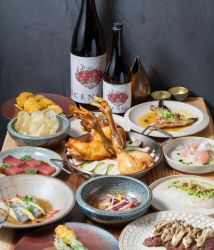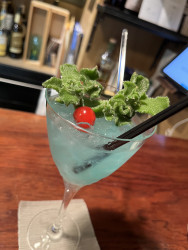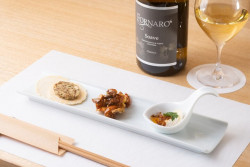
Originally published on metropolis.co.jp on January 2008
In Tokyo’s shabu-shabu dining scene, restaurants feel like they need some sort of gimmick to distinguish themselves from the ubiquitous back-alley boiled beef-fat establishments. While the culinary community lays claim to both the best in quality (great cuts of thin sirloin in boiling sesame and soymilk broth) and the enticingly absurd (the newsworthy and world-famous “no-pants shabu-shabu”), beef, for some people, will just never be enough.
Fortunately, the best dining city in the world now offers pork lovers a paradise of their own. Buta Gumi, located on a backstreet of Nogizaka just around the corner from Tokyo Midtown, boasts no gimmicks, no pretense, and most importantly, no beef. The décor lingers somewhere between a Victorian teahouse and the bar from the TV show Cheers, and the toilets play, somewhat disarmingly, classical music when opened.
While still humming the tunes the bathroom taught us, we started our evening with shochu (¥500-¥900) and French wine from the extensive and well-formed list (¥700-¥800 per glass, ¥4,200-¥8,000 per bottle) and ordered two set menus on the waiter’s recommendation. The sets are unquestionably the way to go here, as they come with appetizers, heaping amounts of meat and vegetables, a Chinese noodle course, and dessert (¥3,900-¥5,700). The first appetizer arrived like a shockingly diverse kaiseki circus. Eight small dishes of mackerel, walnut tofu, sea eel and croquettes toyed with our assumption of what a pork shabu-shabu restaurant should be. The sea eel curled into small spirals and covered with spinach and seaweed was our favorite, presented with as much color as delicacy.
When the pork plates arrived with an extensive selection of kale, cabbage, mushrooms and clear rice noodles, we took turns shabu-shabuing different cuts of pork, preparing bite-size combinations with the included toppings and dipping it all in ponzu and a rich sesame sauce. The “Mangeton” pork was a bit disappointing as its overly fatty texture reminded us of gourmet boiled bacon, but the “Hakinton” variety was bright red and surprisingly lean. It was so light and flavorful in the succulent broth that even the skeptics among us stopped commenting on the lack of Buta Gumi’s lack of beef. Before we plunged too deep into our food coma, though, we couldn’t resist ordering two more plates of walnut tofu, the non-pork winner at this restaurant—soft, sweet, and dabbed with wasabi (¥500). The set course finished with gingery Chinese noodles and a simple yet balanced dessert of red-bean squares.
While it is normally a bit difficult to find balanced meals of anything other than meat at shabu-shabu restaurants, Buta Gumi gave us hope that even the non-pork eaters with us would satiate their hunger. Although the restaurant’s clientele ranged from families with small children to large groups of businessmen out after work, it was evident that a love of pig had brought them all together. While it’s apparent that pork will never fully replace beef in the world of Japanese onomatopoetic cooking, true pork lovers have finally found their home.









